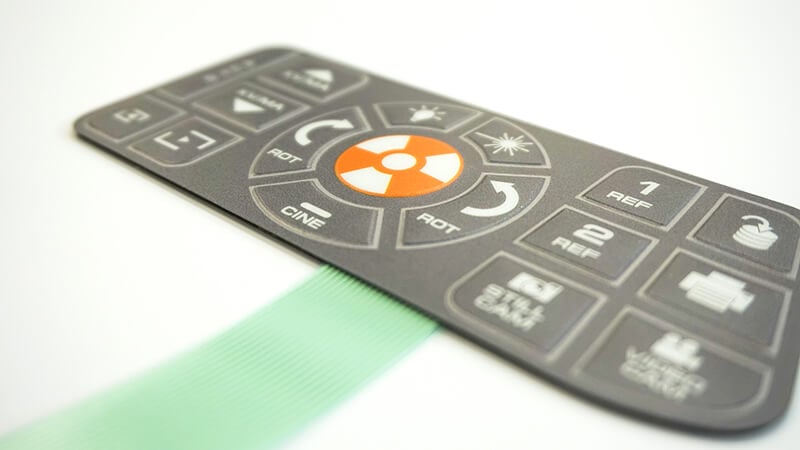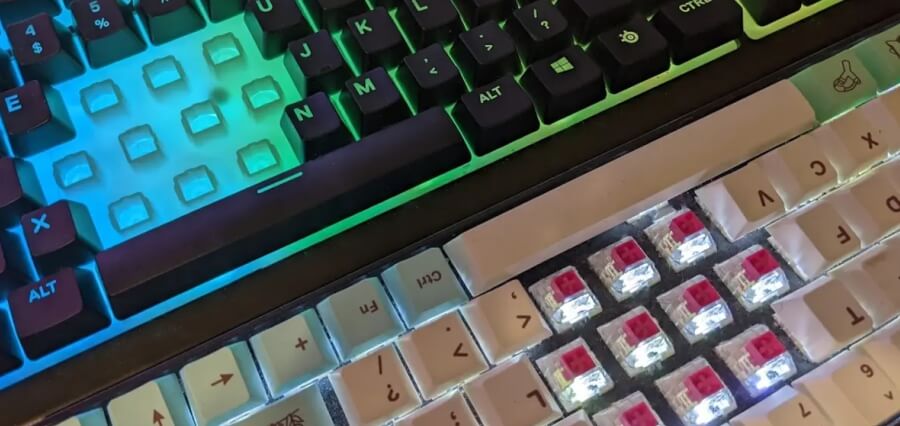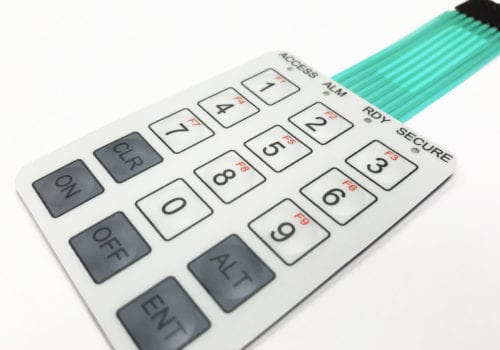Why Choosing the Right Membrane Switch Is Vital for Your Product Design
Why Choosing the Right Membrane Switch Is Vital for Your Product Design
Blog Article
Comprehending the Capability of Membrane Layer Switches Over for Interface Devices
The functionality of membrane switches over stands for a considerable advancement in interface style, incorporating effectiveness with visual convenience. These switches operate through a multi-layered framework that translates individual communications into electric signals, enabling both portable formats and resilience against ecological variables. As sectors increasingly prioritize customer experience, understanding the subtleties of membrane button technology comes to be vital. What ramifications do these advancements hold for future applications, and exactly how might they redefine user interactions throughout numerous gadgets?
What Are Membrane Buttons?
Membrane switches are cutting-edge user interface gadgets that promote individual interaction with electronic tools. These flexible elements are composed of several layers, consisting of a visuals overlay, spacer, and a published circuit layer. The design enables a smooth combination into various electronic gadgets, improving both the aesthetic and practical aspects of customer interfaces.
Membrane layer buttons are typically employed in a large range of applications, from house devices to commercial equipment and medical devices. Their construction normally features a thin account, making them an optimal selection for compact layouts. The responsive responses supplied by these switches can be crafted to meet certain individual preferences, making sure effective interaction in between the user and the device.
Durability is an additional considerable benefit of membrane layer buttons, as they are immune to dirt, wetness, and chemicals, which boosts their life expectancy in demanding atmospheres. Additionally, these switches can be tailored in terms of form, size, and graphic design, permitting branding and user-specific attributes. Generally, membrane layer changes stand for a practical option for enhancing individual experience in digital tools, integrating capability with visual charm in a reliable fashion.
How Membrane Layer Switches Work
Operating on an uncomplicated concept, membrane changes use a split building to sign up user input properly. Each switch contains several layers, including a printed circuit layer, a spacer layer, and a leading visuals layer, which are designed to interact perfectly. When a customer presses the leading layer, it compresses the spacer layer, bringing the conductive aspects of the circuit layer right into contact with each other.
This call creates a shut circuit, signaling the gadget to implement a specific function. The design permits different arrangements, including tactile feedback, which can enhance the individual experience by supplying a physical experience upon activation. The materials made use of in membrane switches usually include versatile substrates, such as polyester or polycarbonate, which make sure longevity and durability against deterioration.

Trick Benefits of Membrane Switches

One more significant advantage is their density. Membrane switches are slim and lightweight, which makes it possible for producers to conserve space in their tools without compromising capability. This function is specifically helpful in applications where weight and volume are essential considerations.
In addition, membrane buttons are resistant to dirt, dampness, and chemicals, improving their sturdiness. This durability prolongs their life expectancy and decreases the demand for regular substitutes, resulting in price savings gradually.
Furthermore, the responsive feedback provided by membrane switches can be optimized to enhance individual communication. They can include functions such as increased buttons or audible clicks, boosting functionality and individual experience.
Applications Across Industries
Interface tools utilizing membrane layer buttons are common in a vast array of markets, showcasing their flexibility and functionality. Membrane Switch. In the medical market, membrane buttons are integral to devices such as diagnostic devices and person surveillance systems, where their resilience and simplicity of cleansing are crucial for maintaining hygiene standards. Similarly, in the vehicle sector, these switches are used in dashboard controls and infotainment systems, providing a smooth and modern-day user interface for customers.
In addition, the consumer electronics market gain from membrane buttons in appliances and handheld tools, where portable layout and straightforward interfaces improve user experience. Industrial applications additionally utilize membrane changes for control board in equipment and automation systems, emphasizing their effectiveness and resistance to harsh settings.
In the aerospace and defense markets, membrane layer switches are utilized in cabin controls and equipment, where dependability and efficiency under severe conditions are paramount. In addition, the video gaming industry increasingly integrates membrane buttons in controllers and game machines, adding to an appealing customer experience. In general, the adaptability of membrane switches enables their widespread usage throughout numerous fields, highlighting their significance in contemporary individual interface style.
Future Patterns in Membrane Layer Change Technology

Furthermore, using sophisticated products, such as polycarbonate and polyester movies, is anticipated to rise, supplying improved toughness and resistance to ecological stressors. These products add to the overall durability of membrane layer buttons, making them appropriate for harsher industrial applications.
Additionally, the consolidation of wise innovation, consisting of IoT connectivity, will allow membrane switches to communicate with other tools and systems, helping with a much more interactive weblink user experience. This trend aligns with the growing demand for wise tools throughout numerous sectors, from healthcare to consumer electronics.
Finally, modification alternatives are anticipated to broaden, allowing manufacturers to create bespoke remedies customized to specific user needs and choices. These advancements will position membrane switches as important components in the evolution of customer interface technology.
Conclusion
In verdict, membrane switches over represent a critical innovation in user interface innovation, providing a reputable and flexible service for varied electronic applications. see this website Their layered construction assists in portable style, while attributes such as tactile responses boost user interaction. The longevity against ecological factors further strengthens their utility across several industries. As advancements in material scientific research and touch picking up innovations proceed, the functionality and applicability of membrane layer switches are anticipated to increase, strengthening their importance in modern digital tools.
Report this page